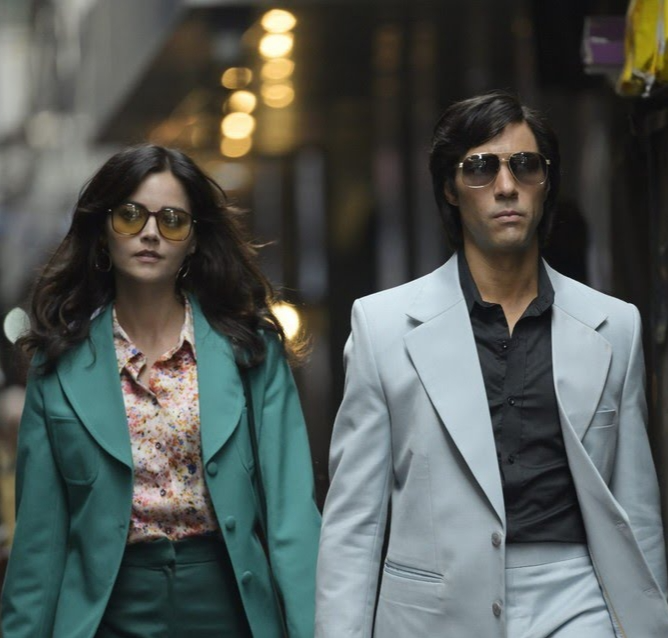★★★★☆
Tucked in the vibrant streets of Bangkok, Kanit House was home to many wayward travelers, ’70s fashion trends and outrageous parties, all serving as smokescreens for the international serial killer at the heart of it all.
“The Serpent” details the insidious crime and murder empire masterminded by the French Vietnamese serial killer Charles Sobhraj (Tahar Rahim) and his many heinous acts in Southeast Asia during the 1970s and early 1980s. Based on the real-life story, Netflix’s latest eight-part thriller docuseries travels the world following the schemes of Sobhraj and his associates as they carry out their nefarious plans and later try to outrun the international authorities seeking justice for their many victims.
At their core, Sobhraj’s tactics were simple: He lured young travelers to his Thai “Great Gatsby” mansion, Kanit House, and slowly poisoned them until they were weak enough to be removed. Running a pyramid-esque scheme, Sobhraj would have the young travelers staying at Kanit House invite over other backpackers in Bangkok until someone became suspicious of his plot and was killed.
These initial parts of the docuseries focusing on Sobhraj’s murder scheme are by far the most capitivating and exciting portions of the show. Director Tom Shankland weaves an intricate narrative of the people caught up in the plot, splicing different events in time together to create one engaging storyline. The anticipation is palpable throughout, as Shankland artfully sets up scenes in which the demise of certain characters is clearly inevitable, yet the ill-fated travelers remain unsuspecting.
Another highlight of the series is the impeccable and stylish 1970s costumes. In particular, the deuteragonist, Marie-Andrée Leclerc (Jenna Coleman), sports some of the most eye-catching looks in any Netflix original to date. Costume designers Rachel Walsh and Adam Howe play off the time period’s classic cuts and designs to clothe Coleman in many show-stealing looks. By complementing the foliage and vistas of Southeast Asia, the costume design comes together with the striking sets to create a truly remarkable visual combination.
The sets and costumes are only further bolstered by the acting in “The Serpent”; Rahim and Coleman provide outstanding performances as the calculating Sobhraj and his terse right-hand woman Leclerc. Their characters are so different yet so well suited for the individual abilities of Coleman and Rahim. Each actor delivers gripping moments scene after scene, allowing the complex and toxic relationship between the two to slowly fester over the course of the show.

A point of contention in relation to the acting, though, revolves around the imbalanced characterizations of Coleman’s Leclerc and the main Dutch diplomat tracking her and Sobhraj, Herman Knippenberg (Billy Howle). While Leclerc, a key figure in most of the crimes, is presented as fearful and brainwashed, Knippenberg is shown to be obsessive and deranged at times in his quest to bring justice to the families of her victims.
Although these traits may be true to a degree, the show exaggerates these aspects of the story to almost reverse the roles of the two. Leclerc, a kingpin of Sobrahj’s operation, is painted to be an empathetic victim and Knippenberg, the sole diplomat seeking justice, is presented to be crazed in his efforts. This reversal of the typical hero-villain typecast seems a little far-fetched in the show’s context and eventually detracts from the true villainy of Sobhraj, Leclerc and their accomplices.
Additionally, the show falters halfway through when the directorial chair switches from Tom Shankland to Hans Herbots. Under Herbots, the plot becomes increasingly repetitive, as the previously fascinating affairs at Kanit House turn stale when Sobhraj goes on the run. This ennui, coupled with rapid oscillations of different timelines, creates the biggest letdown of the series, as the initial exciting plot of “The Serpent” turns cold.
Evidently, Herbots intended to depict a cat-and-mouse scenario between Sobhraj and the forces pursuing him while simultaneously remaining factual with respect to the timeline of events. Unfortunately, the time disparity between Sobrahj’s murders and his arrest years later creates a lackluster portrayal of events on screen.
While “The Serpent” does lose steam near the end, the show still glistens in the face of similar Netflix serial killer documentaries because of the stellar acting, wardrobe and sets. The show succeeds in many elements and, in particular, excels in displaying nuanced characters. Perhaps the series’ greatest asset, however, was its incredible source material and real-world inspiration, reminding us that truth can be stranger than fiction.
"dazzling" - Google News
April 23, 2021 at 07:31AM
https://ift.tt/2PdL19h
'The Serpent' Presents Dazzling Visuals Underscored by Directorial Inconsistencies - Georgetown University The Hoya
"dazzling" - Google News
https://ift.tt/2SitLND
Shoes Man Tutorial
Pos News Update
Meme Update
Korean Entertainment News
Japan News Update
Bagikan Berita Ini















0 Response to "'The Serpent' Presents Dazzling Visuals Underscored by Directorial Inconsistencies - Georgetown University The Hoya"
Post a Comment